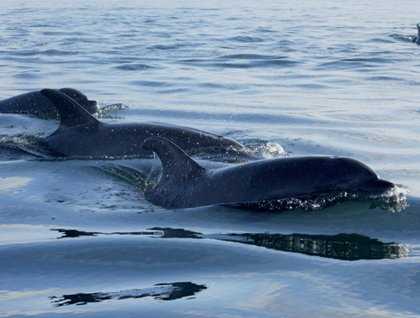We anchored near the largest island of the Galapagos, where many species have learned to coexist within a very pristine ecosystem surrounded by giant volcanoes and a stunning landscape. While we boarded Zodiacs to go to shore, we spotted a pod of bottle-nosed dolphins. These creatures rode the bows of our Zodiacs for about 15 minutes, performing a great show for us. What a surprise!
We had a wet landing at Urbina Bay (named after an early Ecuadorian president). As soon as we landed, we encountered a female Pacific green sea turtle that had just finished laying eggs and was going back into the Pacific Ocean.
During our hike this morning, we could see the uplifting of the ocean floor all over the coastline of this visitor site, an event that took place in 1954. As we walked further into the island we spotted several giant tortoises of different sizes, all belonging to the population of Alcedo Volcano, a dome-type population. We saw young and adult tortoises, as well as one of three species of land iguanas. As these yellow dragons of the Galapagos basked in the sun, we could easily see how healthy the population is after the eradication of many introduced species. This included the eradication of about 150,000 goats on Isabela.
Several years ago, Isabela Island was the focus of a significant and successful program in the ecological restoration of the islands: The Isabela Project for the eradication of feral goats and donkeys. Never before has a program of such magnitude been attempted on an island this size. But the program (supported by Lindblad Expeditions-National Geographic Society through guest donations) was successful beyond all expectations. Now endemic species (mostly iguanas and tortoises) that once faced extinction are increasing well in number and sustaining their fragile ecosystem.
After the hike, we went swimming in the ocean under the equatorial sun.
In the afternoon we repositioned the National Geographic Endeavour a few miles north to visit Tagus Cove. Charles Darwin himself disembarked at this visitor site. Today some interesting historic graffiti can be found from the time when wayfarers sought and found a sheltered harbor here. Some of us decided to go snorkeling, kayaking, and Zodiac riding, while others took the opportunity to hike along tuff cliffs to see the famous Darwin Lake. Along the coastline, we found penguins, flightless cormorants, and many blue-footed boobies and sea lions fishing.







